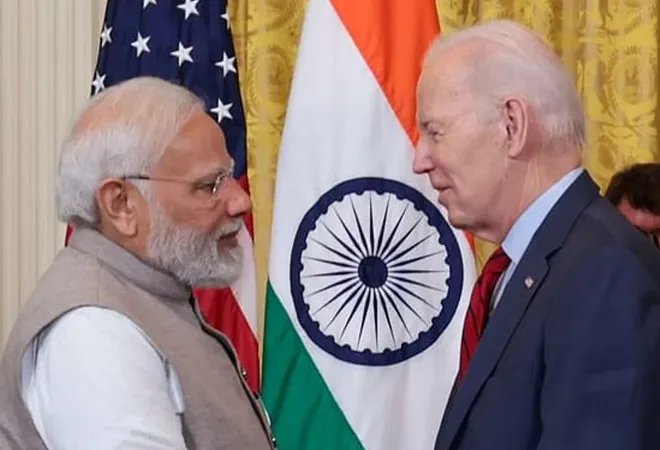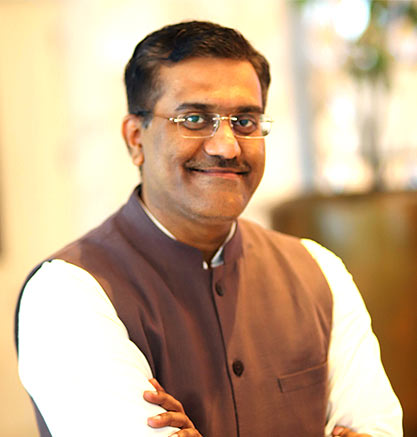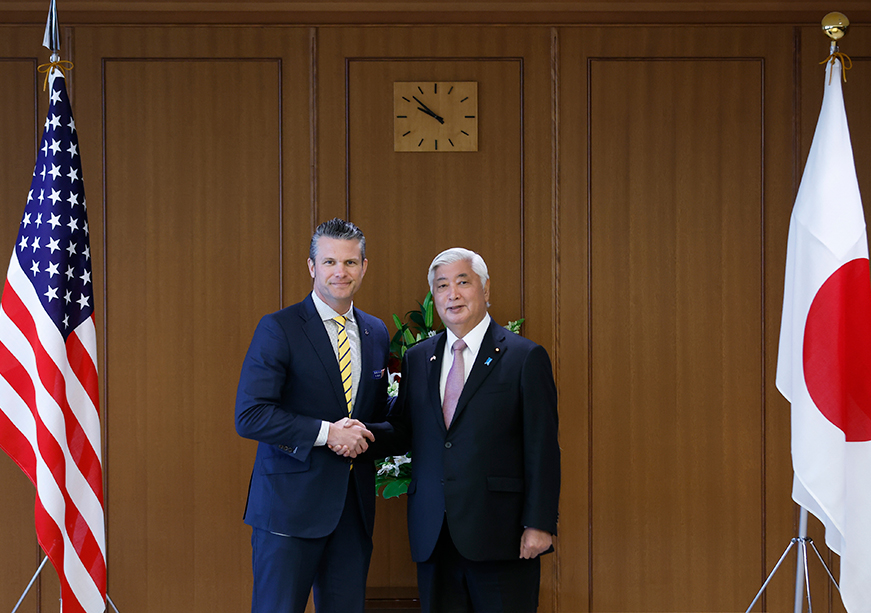
Prime Minister Narendra Modi’s recent visit to the United States (US) has elevated the bilateral tech cooperation to the next level. While much of the focus of the visit was on the two headline-grabbing defence deals: the GE F414 engine co-production and procurement of General Atomics MQ-9Bs Sea Guardian drones, India and the US have also agreed to intensify cooperation in several other emerging and strategic technologies. These are critical not just for both countries’ economic development but will also help them tackle evolving international security challenges. By signing agreements focused on these technologies, New Delhi and Washington are establishing a robust foundation for advancing their ‘global strategic partnership.’
India and the US are capitalising on the opportunity presented by the momentous geopolitical shifts in international politics and India’s tech transformation.
The initiative on Critical and Emerging Technology (iCET) set the tone of this tech engagement a year ago. The agreements signed during Modi’s visit represent the next stage of the iCET partnership. While the fulfilment of these agreements in the upcoming months will certainly depend on several factors, including the extent of tech transfer and application of US strategic export control regimes, the tone for deeper cooperation is set. India and the US are capitalising on the opportunity presented by the momentous geopolitical shifts in international politics and India’s tech transformation.
Defining the Dimensions of Tech Collaboration
In May 2022, India and US announced the iCET to elevate and expand bilateral strategic technology partnerships and defence-industrial cooperation. Spearheaded by the National Security Councils of the two countries, it is being actualised with the help of several research institutions engaged in tech research and development. During the January 2023 visit of Indian National Security Advisor Ajit Doval to the US, both sides formally signed iCET. They also announced several joint research initiatives to accelerate tech cooperation under it. They covered several key technologies, including Artificial Intelligence (AI), quantum technologies, advanced wireless, High-Performance Computing, space technologies, biotech, and Next Generation Telecommunications. Besides these, in the sphere of defence tech, both sides also announced an “Innovation Bridge” to connect US and Indian defence startups.
Spearheaded by the National Security Councils of the two countries, it is being actualised with the help of several research institutions engaged in tech research and development.
The spate of agreements and collaborations announced during PM Modi’s recent visit represents the ensuing phase of the iCET plan. The bilateral agreements covered several critical technologies and created new mechanisms to take them forward. Among the most important ones are:
- Open Radio Access Network (ORAN) systems: India and US have established a Joint Task Force to develop and deploy ORAN systems. This public-private research initiative will be jointly led by India’s Bharat 6G and the US Next G Alliance. Bharat 6G is a tech innovation group instituted by the Department of Telecommunications that brings together industry, startups, academia, research laboratories, standardisation bodies, and relevant government agencies.Given the stranglehold of Chinese telecom companies like Huawei and ZTE in the 5G space, the partnership on ORAN is important. Unlike the Chinese 5G tech, which is predominantly proprietary hardware-based, ORAN creates a “network model to replicate signal-processing functions.” Therefore, the Indo-US collaboration on ORAN is an important step towards establishing a more competitive and secure supply of equipment for telecom networks. It is expected to mobilise diverse players and vendors to join hands in developing a new interoperable telecom network. This effort will also likely go together with similar efforts from Japan, the United Kingdom (UK) and Australia.
- Quantum computing: Both countries have agreed to establish a joint Indo-US Quantum Coordination Mechanism to facilitate collaborative research between the public and private sectors. India is already engaged with Entanglement Exchange and the US Quantum Economic Development Consortium, enabling multi-nation exchanges on quantum computing. Quantum technology has far-reaching implications for encryption, cryptography, aerospace engineering, sensors, modelling, simulation, etc.
- AI: Both countries signed an implanting arrangement to support further joint research on quantum, AI, and advanced wireless technologies. This collaboration builds on the US-India Science and Technology Endowment Fund’s US$ 2 million grant for the joint development and commercialisation of AI and quantum technologies. Notably, the deepening of cooperation on AI comes in the context of India’s Chair of Global Partnership on AI, where a multinational effort is underway to develop responsible, ethical, and trusted AI.
- Plugging into the national innovation ecosystems: India and US also announced the launch of a new “Innovation Handshake” to connect the respective startup ecosystems. In the defence domain, building on the previously announced “Innovation Bridge,” the two sides launched the India-US Defence Acceleration Ecosystem or INDUS-X that creates a network of universities, incubators, corporate, think tanks, and private investment stakeholders.
In bringing these initiatives, India and US are leveraging the already existing commercial synergy between Silicon Valley and India’s burgeoning defence innovation ecosystem. Many Indian startups have participation from American venture capital firms. These include Celesta Capital (Tonbo Imaging, Bengaluru), Accel (Axio Biosolutions, Bengaluru) and WRV Capital (ideaForge, Mumbai).
The extent of tech collaboration is expected to not just demonstrate the Indian tech prowess but also create a tech value chain partnership between the two countries.
In shaping this tech partnership, what is evident is the extent to which the Indian private sector is getting involved in driving the tech agenda. This augurs well and fixes the major lacuna afflicting the bilateral relationship. However, the significance of this collaboration goes well beyond Indian investment in the US tech ecosystem. The extent of tech collaboration is expected to not just demonstrate the Indian tech prowess but also create a tech value chain partnership between the two countries. This represents the confidence that the government has in the Indian tech which has pioneered advanced but affordable tech innovations like the digital public infrastructure.
Certainly, a sobering assessment of the past reveals the many false starts as far as India-US tech cooperation is concerned. Therefore, the advancement of this cooperation will crucially depend on many moving parts in the US government system, particularly concerning defence-related tech and the US bureaucracy’s attitude towards India. However, it is also true that the current set of agreements on emerging technologies implies that technology will now be at the core of India-US ties. The extensive Track 1 and 1.5 consultations both sides mounted in the run-up to PM Modi’s visit indicate political and bureaucratic will to make this engagement fruitful and substantial. This is a remarkable transformation of the bilateral relationship, where in the past, New Delhi often found itself at the receiving end of Washington’s strategic export control or tech-denial regimes.
Sameer Patil is a Senior Fellow at Observer Research Foundation
The views expressed above belong to the author(s). ORF research and analyses now available on Telegram! Click here to access our curated content — blogs, longforms and interviews.




 PREV
PREV


